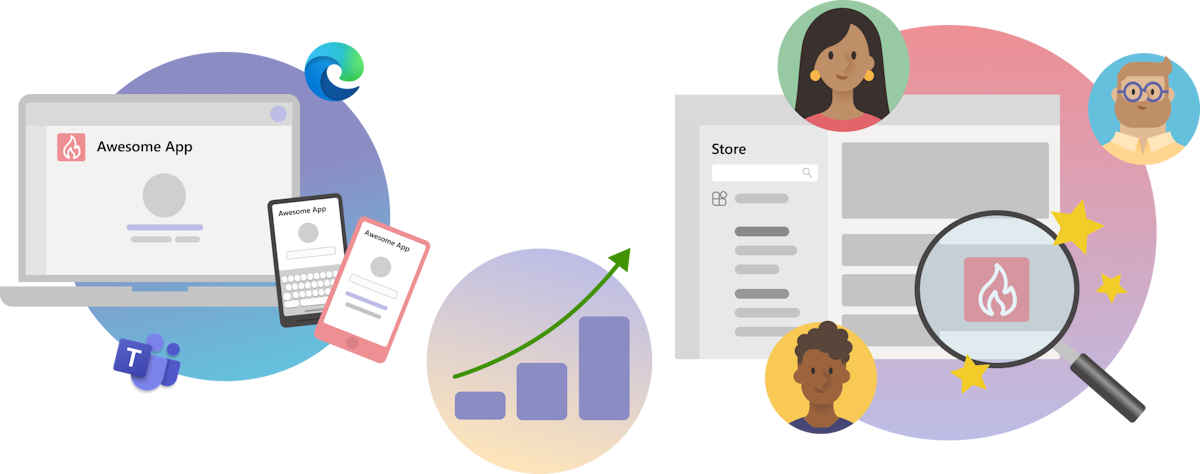12 Simple Tips for Microsoft Teams Application Development for Working More Efficiently
Microsoft Teams has evolved into a central hub for communication, collaboration, and productivity in the modern workplace. Its flexibility and extensibility have made it a go-to platform for businesses looking to streamline their operations. To fully leverage this platform, Microsoft Teams Application Development has become a valuable skill set. In this comprehensive guide, we’ll explore 12 simple yet effective tips to help you enhance your Microsoft Teams App Development experience, enabling you to work more efficiently and effectively.
1. Understand Your Team’s Needs
Successful app development starts with a deep understanding of your team’s unique needs and pain points. Before diving into development, engage with your team members to identify bottlenecks, communication gaps, and tasks that could be streamlined with a custom app. This insight will serve as the foundation for your app’s purpose and functionality, ensuring it addresses real-world challenges.
2. Leverage the Microsoft Teams Developer Platform
Microsoft provides a robust developer platform equipped with a wide array of tools, documentation, and APIs. Take the time to familiarize yourself with this platform, as it grants you access to resources such as the Microsoft Graph API, enabling seamless integration with Teams’ ecosystem. This integration is essential for creating apps that feel like a natural extension of the platform.
3. Prioritize User Experience (UX)
User experience is paramount in app development. Design your app’s interface with simplicity and intuitiveness in mind. Ensure that it aligns with Teams’ design principles, adheres to established user interface conventions, and provides a seamless experience for users. An intuitive and visually appealing interface not only enhances user adoption but also increases productivity.
4. Place Security at the Core
Security should never be an afterthought in application development. Adhere to Microsoft’s security guidelines and best practices to safeguard sensitive data and maintain the integrity of the Teams environment. Utilize encryption, access controls, and identity management to protect against potential threats.
5. Embrace Integration
One of the standout features of Microsoft Teams is its integration capabilities. Make the most of these by integrating your app with other Microsoft 365 services, such as SharePoint, OneDrive, and Outlook. This not only extends the functionality of your app but also simplifies data sharing and collaboration, making it an indispensable tool for users.
6. Optimize for Mobile Accessibility
Consider the mobile user experience when developing your app. With a significant portion of Teams users accessing the platform via mobile devices, it’s essential that your app is responsive and functions seamlessly on both desktop and mobile screens. Responsive design ensures accessibility across various devices and keeps your app inclusive.
7. Rigorous Testing
Thorough testing is a critical phase of app development. Conduct extensive testing to identify and rectify any bugs or usability issues. Engage in usability testing with real users to gather feedback and insights. This iterative approach ensures that your app is fine-tuned for optimal performance and user satisfaction.
8. Stay Informed and Adapt
The technology landscape, including Microsoft Teams, is continuously evolving. Stay informed about the latest features, updates, and changes to the platform. This knowledge will help you ensure that your app remains compatible and takes full advantage of new functionalities as they become available. Regularly review Microsoft’s developer documentation and participate in relevant developer communities to stay up-to-date.
9. Provide Training and Support
Even the most user-friendly app may require training and support. Offer resources, tutorials, and assistance to help users maximize the benefits of your app. Proactive support and guidance can significantly enhance user adoption and satisfaction.
10. Monitor Usage and Gather Feedback
Implement analytics tools to monitor app usage and gather valuable insights into user behavior. This data can help you understand how users interact with your app and identify areas for improvement or expansion. Additionally, actively seek feedback from users to address pain points and continually enhance the user experience.
11. Regular Updates and Maintenance
To maintain the relevance and effectiveness of your app, commit to regular updates and maintenance. Address user feedback promptly, and be proactive in making enhancements. As your team’s needs evolve, ensure that your app evolves with them, staying aligned with your organization’s goals.
12. Compliance and Regulations
Be acutely aware of any compliance requirements and regulations applicable to your industry. Ensure that your app complies with data protection and privacy laws, especially if it handles sensitive information. Addressing these requirements proactively not only mitigates risks but also fosters trust among users.
In Conclusion, Microsoft Teams Application Development is a powerful way to tailor your workspace to your team’s unique requirements, ultimately enhancing productivity and collaboration. By following these 12 simple yet essential tips, you can create efficient, user-friendly apps that seamlessly integrate with Microsoft Teams and empower your team to work more efficiently and effectively.
As Microsoft Teams continues to evolve and adapt to the changing needs of the modern workplace, your expertise in app development will become increasingly valuable. Stay committed to continuous learning, user-centric design, and proactive maintenance to ensure your apps remain indispensable tools in the ever-evolving landscape of collaboration and productivity.
